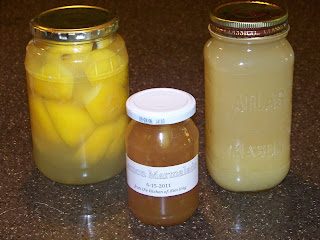This week, EcoFactor, a Dallas, Texas company announced the results of their test pilot programs for energy savings. Their fully automated broadband service
saved the average homeowner 17% on their electric bill.
EcoFactor's energy management engine collects, stores and processes 24,000 points of data each day from individual homes, local weather stations and numerous other geographic inputs. Since approximately 50 percent of the average energy bill for American homes goes towards heating and cooling, such reductions result in significant cost savings.
Smart algorithms manage a home’s thermostat throughout the day, tweaking the settings to reduce energy consumption, yet maintain comfortable temperatures.
The algorithms factor weather reports, the physical characteristics of the home, as well as manual input from the home owner. This service has limited availability currently, but is growing.
|
|
Sample rates from New York State's
|
Until your utility company has such a service in place, there are still many ways to reduce your energy consumption. Many electric providers offer a time of use (TOU) discount with a special meter to customers who use the bulk of their power during
off peak hours.
Off-peak power consumption does not stress the electrical grid as much during day, so local utilities don’t need to use incremental generating facilities. Additionally, due to the way electric companies generate electricity, their turbines must run 24 hours/day to meet the peak demands. They cannot slow down their generators during off peak hours because it would
take too long and require too much energy to get them running efficiently again for the peak hours. Therefore, the companies want to reward the customers who use the electricity during the slow times, which also reduces the strain on the electrical grid.
A quick phone call to your local utility company can tell you if they offer TOU packages. Most of these packages do have a monthly fee, but if the consumer changes their habits to off-peak use, the savings will easily offset the cost of the program. The utility companies will not tell the consumer about these programs, the home owner needs to inquire.
Even without a special meter and program in place for TOU rates, running the larger appliances at night (especially in the summer) keeps the appliances from competing with the air conditioner. A washing machine, dishwasher and clothes drier all generate heat. If they run during the warmest part of the day, it makes it that much more difficult to cool the house and reduces the strain on your air conditioner.
Speaking of air conditioners, if you've not had yours serviced yet this season, check your electric company's website for rebates on service calls. Simply by having an annual check up on your system, the customer is eligible for a rebate. In Ohio, our local utility company (First Energy) is offering a
$25 dollar rebate on HVAC service calls. There are a number of ways to save on your electricity, often by starting at your local provider's site, where a consumer can find many tools to analyze their usage as well as make suggestions for savings.
Consumer Reports suggests raising the air conditioning temperature to 78 degrees and letting your fans do the rest. A homeowner saves two percent in utility costs for each degree warmer on the thermostat. Check the energy-efficiency rating (EER). The EER is supplied by the manufacturer and typically certified by the Association of Home Appliance Manufacturers. The higher a unit's EER, the
lower its operating cost compared with other models of its size.
The image on the left is from an analysis of Our Daily Green's home. By seeing that the bulk of our usage is from hot water and laundry, we've contemplated a boycott of both showers and laundering clothes, but that may create new issues. There are a few other ways we can save, starting with shorter showers, turning the water off while lathering, and an insulated cover for our hot water tank. A little research and consumer diligence can save a significant amount of both money and energy.

 Beginning July 5, 2011 through October 4, 2011, Alexander Lee, founder of Project Laundry List will be riding his bike across the United States in a Clotheslines Across America tour to promote the benefits of air drying clothing. Additionally, the tour will focus on resetting temperatures on water heaters, eliminating standby electricity (aka "phantom loads" or "vampire power"), thermostat adjustments, more efficient driving, carpooling, water conservation, eating more vegetarian meals, and trip chaining.
Beginning July 5, 2011 through October 4, 2011, Alexander Lee, founder of Project Laundry List will be riding his bike across the United States in a Clotheslines Across America tour to promote the benefits of air drying clothing. Additionally, the tour will focus on resetting temperatures on water heaters, eliminating standby electricity (aka "phantom loads" or "vampire power"), thermostat adjustments, more efficient driving, carpooling, water conservation, eating more vegetarian meals, and trip chaining.












